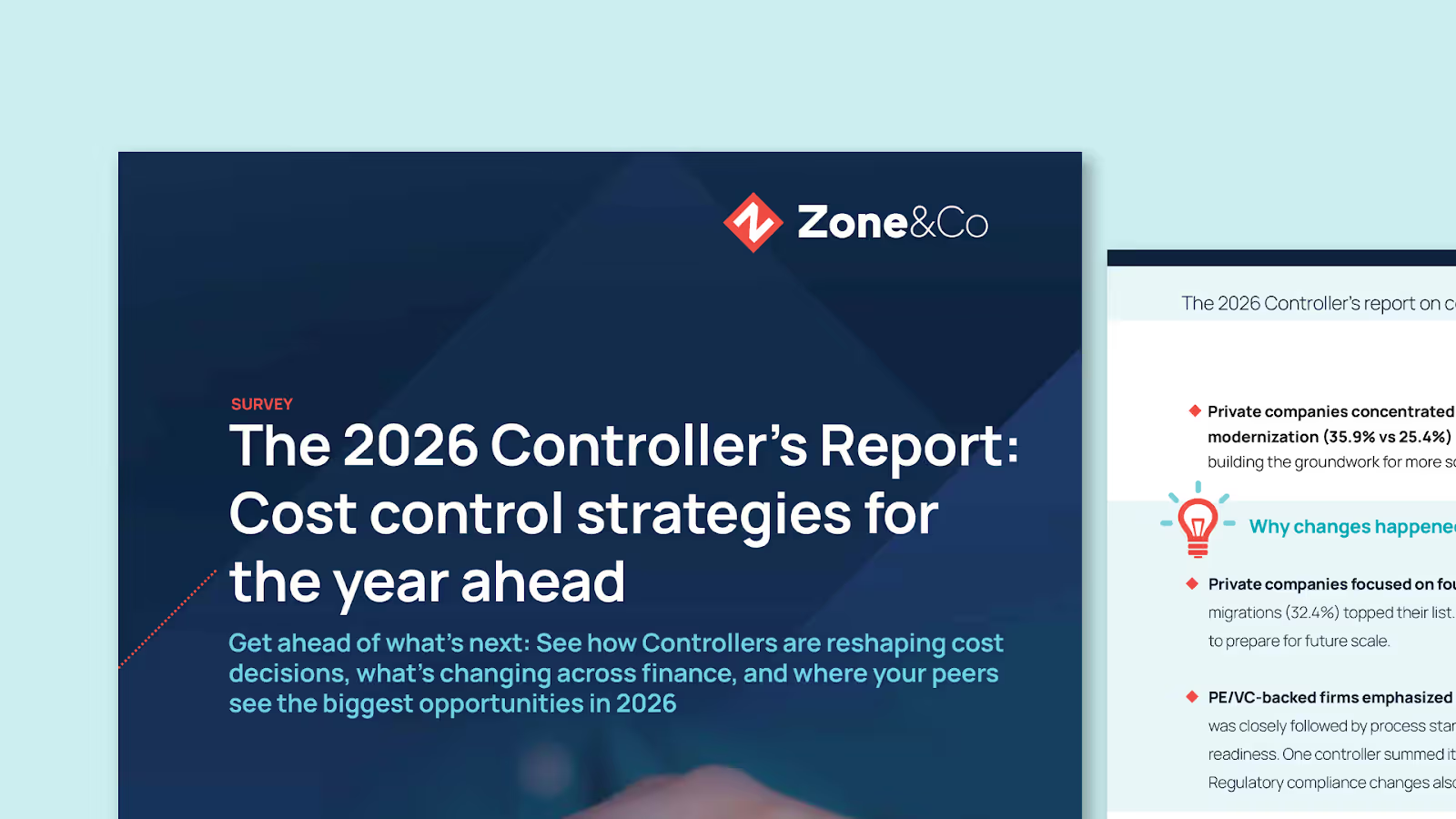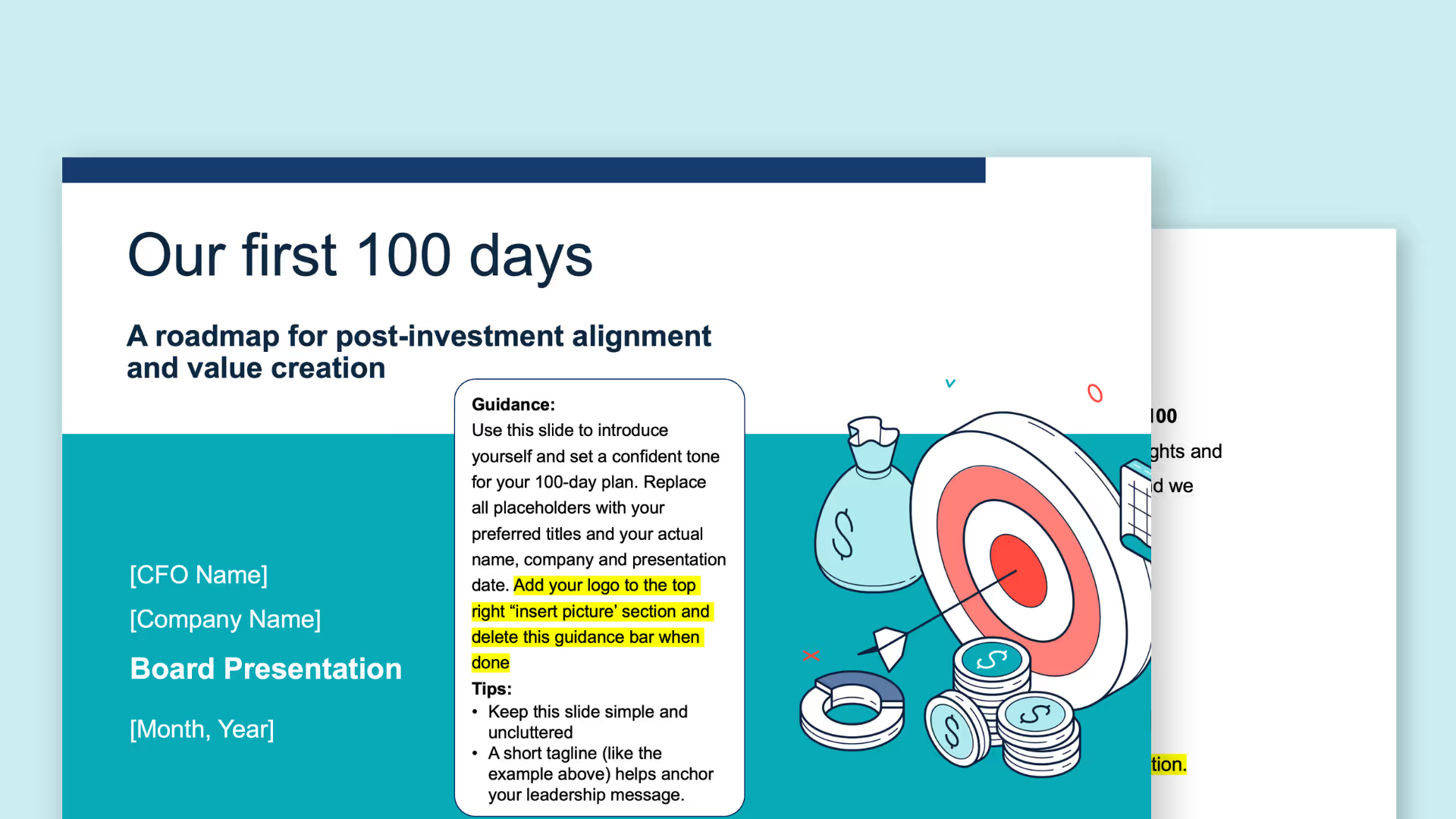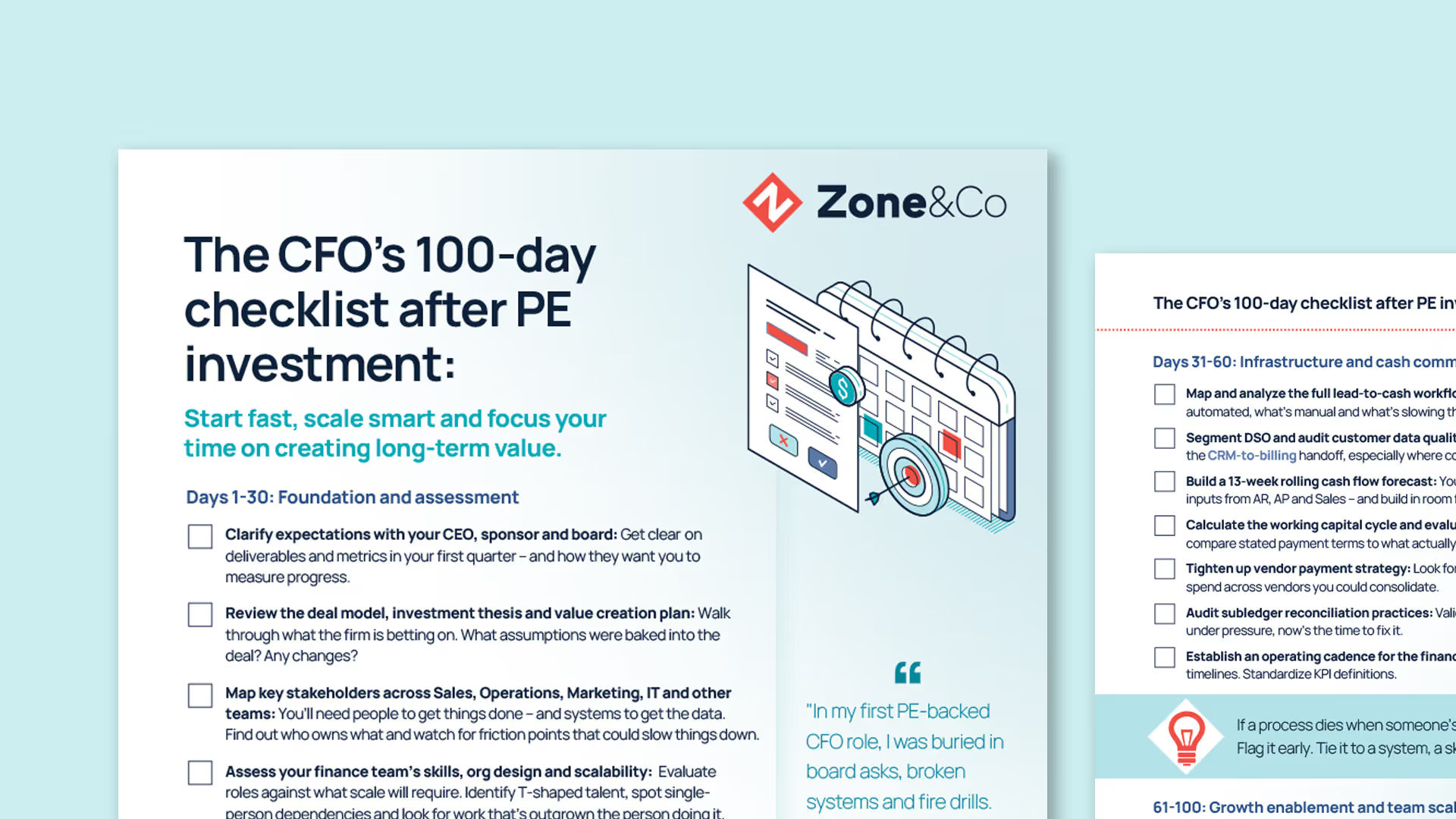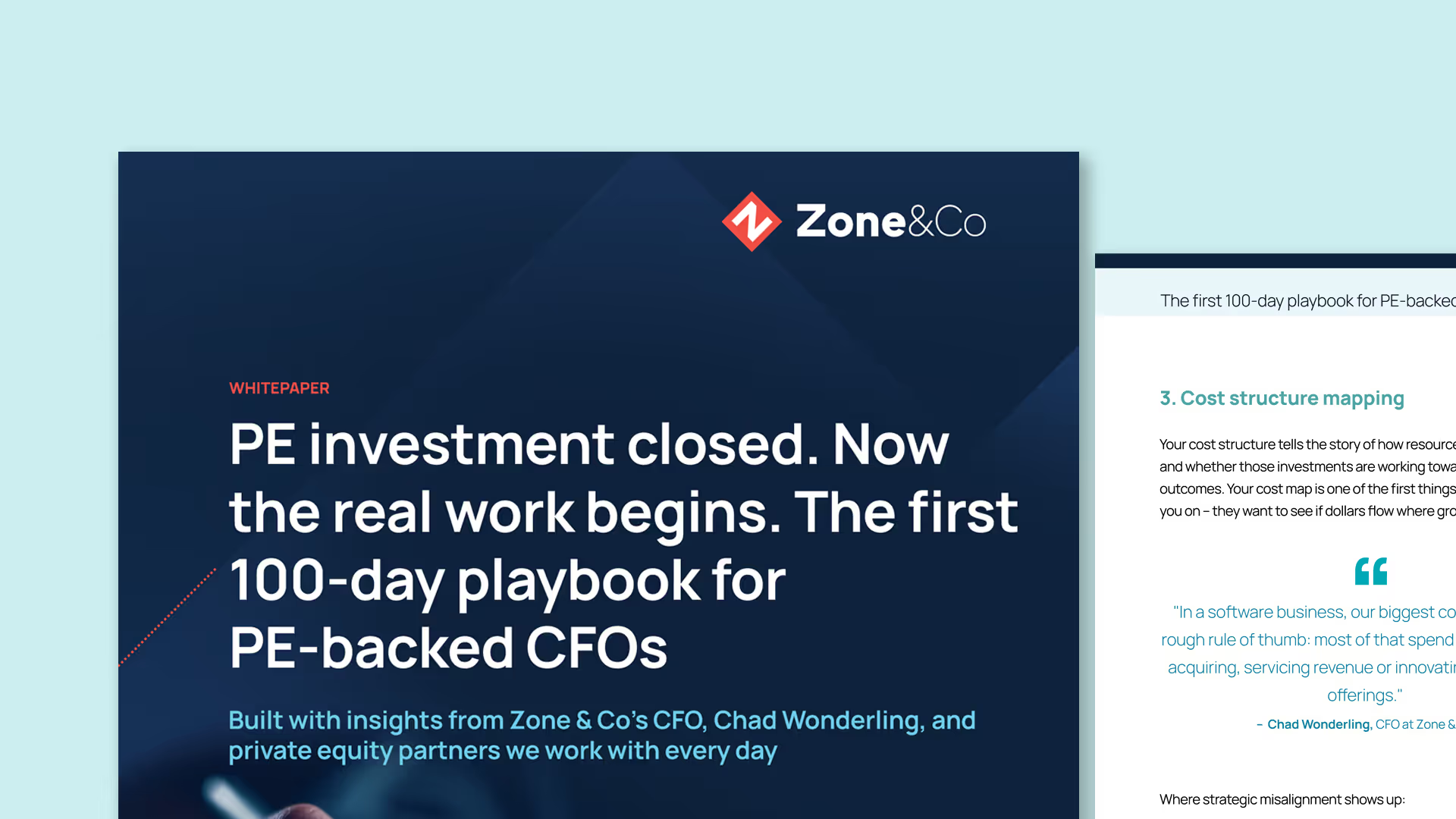The 2026 Controller’s Report: Cost control strategies for the year ahead

Picture this: your CFO schedules a quick call and mentions the board wants to see a 15% reduction in operational spend next quarter. The timeline is tight, but the message is clear – find meaningful, sustainable reductions without breaking the business.
Sound familiar? These kinds of cost control mandates often land without warning. One week you're refining workflows or closing the books. The next you're triaging vendor contracts, modeling headcount changes or revisiting systems that were “non-negotiable” just months ago.
The real difficulty lies in making decisions that won't backfire three months later – like when a vendor contract you eliminated turns out to be tightly coupled to your automated billing workflows, or when shifting work upstream leaves remaining staff stretched thin and turnover risk starts creeping in.
This article outlines six different decision-making approaches Controllers in our survey said they’ve used when managing cost reduction efforts. You’ll see where each tends to work best, what tradeoffs they expose and how to pressure-test them inside your org.
Summary (TL;DR)
- The key insights in this article come from our 2026 Controller’s Report, based on input from 100 Controllers across industries and ownership models.
- When managing cost decisions, most Controllers rely on consultation, cross-functional alignment and prior experience. Only 7% said they use a structured, repeatable approach.
- Cost control regrets are surprisingly common. More than half of Controllers wish they'd handled at least one previous cut differently, with headcount and software/systems as most common ones.
- This article outlines six structured approaches that Controllers in our survey said they’ve used to guide cost decisions in different scenarios.
What Controllers told us about how cost decisions usually get made
When we asked Controllers about the current state of cost control strategies, only 7% said they use a structured, repeatable framework for decision-making. Most rely on a mix of stakeholder input and prior experience – especially for fast-moving, department-level optimizations where time and context are limited.
Whom do Controllers consult the most?
- CFOs: involved in 85% of cost decisions
- FP&A teams: 32% bring them in for scenario modeling or forecast impact
- HR: 23% when reductions involve compensation or headcount
- Revenue/GTM leaders: 15% for spend tied to revenue-driving functions
- IT/systems: 15% when vendor or tech stack changes are in play
Building strong relationships with department leads who know what they will need and what they might not need in the future helps minimize risk, surface edge cases and stress-test tradeoffs.
But the quality of these decisions often hinges on timing. When conversations happen too late – or the right questions never get asked – risk tends to creep in. In fact, 53% of Controllers said they regretted at least one recent cost reduction. The most common regret areas were headcount (21%) and software/systems (17%).
The underlying causes? Decisions made under pressure, blanket percentage cuts were made without assessing actual impact and limited stakeholder consultation during the decision process.
In an attempt to help you avoid regrets like these, the rest of this article outlines six approaches that Controllers in our survey said they’ve used to improve decision quality – particularly when stakes are higher or tradeoffs are harder to untangle:
- Multi-criteria decision matrix (MCDM) scoring
- Headcount analysis tied to business volume metrics
- Business objective alignment with performance tracking
- Cost categorization by business criticality
- Board benchmarking and external validation approaches
- Forecast impact analysis for long-term thinking
Each brings a different lens to cost control – and each works better in certain conditions, depending on how decisions get made in your org today.
Multi-criteria decision matrix (MCDM) scoring for cost control decisions
One Controller told us they use a Multi-criteria decision matrix (MCDM) scoring model to compare options when tradeoffs are multidimensional. The idea is simple: you keep your stakeholder conversations, then channel the inputs into a structure that separates signal from noise.
"We are weighing each criterion that factors into a decision. Then we're scoring each option for those criteria, and finally we're adding up the scores." – Controller, US manufacturing company
How the MCDM approach works in practice
- Define your cost reduction options clearly. For example: eliminate Tool A entirely, consolidate Tools B and C, renegotiate vendor contracts or reduce headcount in specific departments.
- Pick the criteria that matter right now. These are your dimensions of value, for example: business impact, time to savings, one-time costs to implement, operational disruption, customer impact, user adoption or training lift.
- Weigh the criteria based on importance. This part is where you answer "What do we care about most right now?". Weights reflect your near-term priorities – if cash flow is critical, you might weight "time to savings" at 30% while "operational disruption" gets 15%.
- Score each option against every criterion on a 1-10 scale (where 1 = poor fit, 10 = excellent fit).
- Calculate composite scores to rank all options, then pressure-test the results in stakeholder discussions.
When the MCDM framework tends to work well:
- Major system consolidation decisions affecting multiple departments
- Vendor contract renewals with competing alternatives
- Headcount planning across business units with different workloads
- Resource allocation during strategic pivots or restructuring
- Cross-functional changes where each group values different outcomes
Why Controllers rely on this approach? Two reasons: transparency and explainability. The model captures your logic in a way that holds up in budget reviews and board discussions – you can point to specific criteria and weighted scores that supported your cost control recommendations.
Headcount analysis tied to business volume metrics
To avoid the pitfalls of blunt percentage cuts, one Controller said they tie staffing decisions to workload metrics instead of budget targets alone.
This cost decision-making process typically involves:
This cost management approach tends to work well for:
- Service-heavy environments where transaction volume drives effort
- Close, AP, AR, billing or support teams with clear throughput metrics
- Operations roles tied to measurable output (fulfillment, manufacturing, warehouse)
- Sales support functions (order processing, customer onboarding, account management)
- Any situation where abrupt headcount moves would ripple through revenue recognition or customer SLAs
Questions you might ask before deciding where to apply cost control:
- Which outputs drop if this role goes away next month?
- Which processes slow first, and where does that show up financially?
- What’s the cross-training plan to absorb work without burning out the team?
- How long would capability take to rebuild if demand returns?
This framework requires close collaboration with department managers who understand daily operational requirements. Finance teams may have visibility into headcount costs but often lack insight into how individual roles contribute to overall capacity and service delivery.
Business objective alignment with performance tracking
One Controller in our survey said their first step in any cost review is to protect investments tied to strategic objectives – even if those expenses look high against short-term budget pressure. They start by mapping spend to business priorities, then evaluate cuts based on performance, not just cost.
Steps you could take to align areas for cost control with business objectives:
- Map spend categories to business objectives (e.g., growth, retention, compliance, operational stability
- Define outcome metrics for each category – This could be qualified pipeline, renewal rate, time-to-close, first-time-right in AP, days to cash
- Track usage so you know what’s adopted and what sits idle
- Assess ROI where feasible, or build a defensible proxy when exact attribution is hard
This approach works well for growth or customer-critical functions where cutting the wrong tool harms revenue or satisfaction. It also applies to programs with measurable outputs that leaders value but can feel "expensive" out of context.
For example, marketing automation platforms might appear expensive on a per-license basis, but if they're demonstrably driving qualified leads that convert to paying customers, eliminating them could damage future growth prospects.
Quick litmus test to understand the strategic value of your potential cost control areas:
- Does this expense support core business objectives? If so, how?
- What quantifiable results does this investment produce?
- How extensively do teams actually utilize this resource?
- What measurable return (ROI) does this spending generate?
This strategic alignment, plus performance tracking gives you the data to protect investments that drive outcomes leadership cares about.

Risk-based cost prioritization by business criticality
Another Controller told us they run a criticality assessment before any broad reduction. Categorizing spend this way clarifies where savings are clean versus where discretionary spending can be reduced with minimal operational disruption.
Common framework for assessing risk level of potential cuts:
- Compliance-mandated expenses – costs required by regulation that can't be eliminated
- Core operational costs – expenses that support basic business functions and service delivery
- Growth investments – spending that drives future revenue or competitive positioning
- Discretionary expenses – costs that enhance operations but don't define core capabilities
This approach works particularly well for Controllers managing costs across diverse business units with different operational requirements – it creates shared language with budget owners so everyone understands why the same line item might sit in different risk categories across functions. What constitutes "essential" spending often varies significantly between manufacturing operations, customer service teams or marketing departments.
Pitfalls to watch:
- “Everything is core.” Push for evidence.
- Hidden compliance hooks inside “convenience” tools. Confirm before you cut.
- Internal productivity tools that quietly enable month-end or audit workflows.
Quick risk assessment questions:
- What stops working if we eliminate this expense next month?
- Are there regulatory or compliance requirements we're missing?
- How would this cut affect customer service levels or revenue delivery?
- What's the cost to rebuild this capability if demand returns?
Risk-based prioritization helps you identify where cuts create manageable trade-offs versus where they introduce operational or compliance risks you can quantify.
Board benchmarking and external validation
Some Controllers use peer benchmarks and board perspective to calibrate scope and timing, especially when internal alignment is tough or when facing unfamiliar cost reduction scenarios. They mentioned that board members often bring valuable context from other organizations they've worked with, helping validate whether proposed cuts are reasonable or signal avoidable risks.
How to gather external perspective for cost decisions:
- Start with benchmark research – collect spend data from similar companies where information is available
- Ask board members specific questions about ranges, cautionary experiences and typical sequencing they've seen
- Test your assumptions – use external input to identify where reductions are reasonable and where they signal risk
Questions to ask board members or external advisors:
- What cost reduction approaches have you seen work well in similar situations?
- Where have you seen companies cut too deep too fast?
- What's a reasonable timeline for these types of changes?
- Are there industry-specific risks we should consider?
When board benchmarking tends to work well:
- First-time Controllers lacking experience with major cost reductions
- Situations involving unfamiliar technology or operational changes
- Decisions requiring validation of industry-standard practices
- Complex tradeoffs where internal consensus proves difficult to achieve
What to watch for: Board members might share experiences that don't directly apply to your situation. Focus on principles and patterns rather than copying specific approaches that worked elsewhere.
Forecast impact analysis for long-term thinking
Another Controller in our survey said they project and model downstream effects before finalizing cuts. This approach extends analysis beyond immediate expense savings to understand how cuts might affect revenue generation, customer satisfaction or strategic flexibility over time.
Rather than focusing solely on expense reduction, this approach evaluates how cuts might position the organization for different future scenarios – accounting for implementation timelines, temporary productivity disruptions and potential reversal costs if reductions prove excessive.
How to build forward-looking cost impact models:
- Map the timing of costs versus savings
- When do you incur termination fees, migration costs, or transition expenses?
- When do actual savings hit your cash flow?
- What's the breakeven timeline for each major cut?
- Model operational disruption periods
- How long does it take to migrate data or retrain staff on new systems?
- What's the productivity impact during vendor transitions?
- When does operational efficiency return to baseline levels?
- Calculate reversal costs for key scenarios
- Cost to rehire and retrain if demand returns in 6-12 months
- Cost to restart cancelled software licenses or services
- Vendor restart fees and setup costs if you need capabilities back
- Lost institutional knowledge or data that's expensive to rebuild
- Stress-test against business scenarios
- Growth scenario: Can you scale back up without breaking operations?
- Downturn scenario: Do cuts provide enough runway and flexibility?
- Competitive pressure: Do reductions leave you unable to respond to market changes?
Examples of hidden costs this analysis reveals:
- Software consolidation: Eliminating a $50K tool saves money upfront but requires 200 hours of staff time to rebuild reporting workflows, plus $30K in consultant fees
- Vendor changes: Switching to a cheaper logistics provider saves 15% on shipping but creates 2-week delays that hurt customer satisfaction scores
- Facility cuts: Closing a regional office saves $120K annually but forces remote work that reduces collaboration and slows project delivery by 20%
When this framework tends to work well:
- Preparing for economic uncertainty with multiple possible outcomes
- PE/VC situations with tight cash windows and board-level scrutiny
- Markets where demand can shift quickly and optionality matters
- Any large reduction where reversal costs would be significant
- Cash flow management where timing of savings versus costs matters
This framework prevents the most expensive type of cost control regret – cuts that save money initially but cost significantly more to fix later.
When structured cost decision frameworks matter most
Controllers who’ve adopted structured decision-making approaches often point to a specific trigger – something that pushed them beyond gut feel and stakeholder consultation:
- Previous ad hoc decisions created regrets or required expensive reversals
- Cost reduction targets exceed 10-15% of departmental budgets
- Multiple stakeholders struggle to align on priorities and tradeoffs
- PE/VC investors or board members request detailed justification for spending decisions
- Leadership demands faster decision-making with a consistent rationale
In these moments, a lightweight framework doesn’t slow things down – it creates the clarity needed to move quickly without second-guessing outcomes later.
Not sure where to start? Match the framework to the situation:
- High complexity, multiple criteria → Multi-criteria decision matrix
- Staffing decisions with measurable output → Volume-based headcount analysis
- Protecting strategic investments → Business objective alignment
- Risk assessment across functions → Business criticality categorization
- Unfamiliar territory or validation needed → Board benchmarking
- Large cuts with long-term implications → Forecast impact analysis
Importantly, these frameworks don’t replace stakeholder input. They give those conversations structure – turning opinions into evaluation criteria and disagreements into tradeoff discussions you can work through.
And when cuts carry weight, that clarity matters.
How to implement the best cost framework in your business
Most Controllers don’t roll out a new framework across every cost decision. They start small – usually with a mid-sized decision that has visible impact but manageable risk.
It’s a way to test the approach, refine the structure and build confidence before applying it in higher-stakes scenarios.
Practical implementation steps:
- Document current decision patterns – track how you made your last few major cost decisions, noting stakeholders involved, criteria considered and outcomes achieved
- Choose one framework to pilot – select based on your biggest current challenge (complex tradeoffs might benefit from MCDM, cash flow concerns could benefit from forecast analysis)
- Test with mid-sized decisions – avoid starting with the highest-stakes choices while you refine your approach
- Expand stakeholder consultation – add perspective from groups like IT/Systems for technology decisions, or department managers for operational cuts you don't typically involve early in the process
- Create documentation templates – establish consistent formats for capturing rationale and tracking results (decision matrices, impact timelines, stakeholder input summaries)
Common implementation pitfalls:
- Making the process too complex for urgent decisions
- Using frameworks only for major cuts (missing opportunities to improve routine decisions)
- Treating structured analysis as a replacement for stakeholder buy-in rather than a tool to enhance it
Most Controllers adapt their chosen framework to match available time while keeping the core structure that prevents regrettable decisions.
Making your next cost decision count
The frameworks Controllers shared in our survey aren't mutually exclusive. Many successful implementations combine elements from different approaches based on the specific decision context and organizational requirements.
If any of the six approaches felt relevant, start small. Try one on a mid-sized decision. Keep the template. Adjust it for the next round. Over time, you’ll build a lightweight toolkit you can pull out when the stakes rise or scrutiny increases.
Whether through systematic scoring, categorization exercises, or forecast modeling, the goal remains making cost control decisions that stakeholders can support, that achieve intended objectives, and that don't require expensive reversals when business conditions change.
Want the full detail to pressure-test your approach? Download the report, compare your decision path to peer patterns and pick one place where a structured pass could strengthen the work you’re already doing.
FAQs
Get a Personalized Demo Today
Start a conversation with an expert who asks thoughtful questions and shows you how Zone & Co can solve your unique problem.






